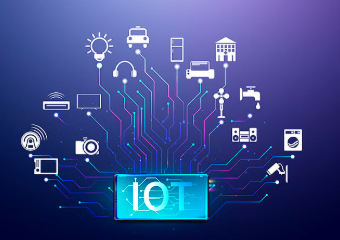The Internet of Things (IoT) continues to grow rapidly, with billions of connected devices contributing to an increasingly complex digital ecosystem. These devices constantly send and receive data from homes to industries, shifting how wireless networks are built and managed. The demand for low latency, higher bandwidth, and reliable connectivity is reshaping traditional network infrastructures, pushing them to evolve in scale and sophistication.
As IoT devices multiply, wireless networks must adapt to support constant data transmission and increased traffic without compromising performance. This shift influences everything from infrastructure planning to signal distribution and access point placement. Understanding how these changes affect connectivity is essential for modern network strategies.
More insights into adapting to these evolving demands can be found at https://www.signalsolutions.com/services/wireless-solutions-san-francisco. Businesses and organizations must reassess their wireless capacity and plan for scalable solutions supporting this continuous growth. Without proper updates, existing systems may struggle to maintain efficiency, leading to service disruptions or data bottlenecks.
The expansion of IoT technology requires a rethinking of core network fundamentals. IoT devices send and receive data differently than traditional digital endpoints; they’re highly variable in how often and how much data they transmit, and their connection needs are usually determined by their function, location, and the criticality of their data.
For example, an environmental sensor monitoring air quality transmits tiny data packets hourly, while a security camera streams high-definition video continuously. As organizations deploy thousands of devices across their facilities, wireless networks must simultaneously support high densities and a wide range of data rates.
Unlike older networks, modern designs require adaptive, flexible architectures to accommodate sudden scaling and technology updates. Building a foundation that can evolve alongside rapidly changing applications and unpredictable connection loads is a key challenge.
One of the most complex aspects of supporting IoT is the coexistence of many unique devices within a shared wireless environment. Each type of device can create specific demands. For instance, factories might place thousands of low-power tracking tags on assets, which must be monitored reliably and continuously throughout the floor. Hospitals and smart campuses deploy life-saving medical and environmental monitoring systems that can’t afford lapses in connectivity.
Even logistics hubs and smart buildings depend on precise, real-time reporting from embedded sensors or vehicle trackers. These scenarios introduce unprecedented challenges around network congestion, signal interference, and dead zones.
Installation environments also vary widely—urban areas might struggle with interference from overlapping networks, while remote or sprawling locations bring range limitations. Building a resilient network for IoT means understanding these use-case-driven challenges and having strategies to overcome them, such as spectrum planning, device segmentation, and proactive monitoring.
Advanced technologies like 5G and Wi-Fi 6 offer tremendous leaps in device density and data speeds. 5G’s support for massive machine-type communications enables thousands of IoT devices per square kilometer, making it ideal for cities and major venues with dense sensor deployments.
However, increasing speed doesn’t solve every issue—many sensors only transmit small amounts of data but require predictable performance and low-latency access. For a smart city’s traffic management or building automation system, it’s more important that each device stays connected reliably than that every endpoint gets the fastest possible bandwidth.
This means deploying additional access points in high-density zones, optimizing frequency assignments, and segmenting traffic by service priority. In large-scale applications, specialized wireless protocols may complement these standards to ensure both speed and stability, with critical devices given higher priority on the network.
Battery life is a central concern for many IoT applications, especially where devices are physically inaccessible or deployed in harsh conditions. Engineers often design sensors to operate for years without needing new batteries or maintenance.
Technologies like LoRaWAN and NB-IoT are specifically tailored for such scenarios, as they use lower frequencies and power-efficient transmission standards that prioritize longevity over sheer data speed. A smart agriculture operation may deploy hundreds of soil moisture probes across vast acreage, each sending periodic updates while remaining mostly dormant to conserve energy.
On the other hand, applications requiring constant data flows, such as video surveillance, need to strike a balance between device capabilities and energy capacity, perhaps leveraging power-over-ethernet or solar charging.
Organizations must carefully consider how often devices need to transmit, their physical environment, and the criticality of their data when selecting the proper connectivity protocols, as this determines both deployment scale and long-term management cost.
The explosion of IoT introduces serious and sometimes unique cybersecurity risks. Each connection could become an entry point for threats ranging from data breaches to physical sabotage. Sensitive data flows—from medical telemetry in hospitals to operational details in critical infrastructure—are frequently carried over these networks.
Without strong device authentication, encryption, and segmentation, an organization’s infrastructure may be at risk. The best approach is multidimensional: regular device updates, network segmentation by function, and constant real-time monitoring for anomalies.
Programs like the NIST Cybersecurity for IoT Program offer best-practice frameworks, emphasizing continuous improvement and layered safeguards.
Real-world examples, such as distributed denial-of-service attacks launched through unprotected cameras or routers, underscore why proactive security policies and advanced threat detection capabilities have become vital aspects of robust IoT network design.
Technology never sits still, and new wireless solutions are already shaping future IoT deployments. Private 5G networks grant organizations dedicated bandwidth independent of public carriers, ensuring reliability for crucial operations in logistics centers, factories, or research campuses.
Meanwhile, software-defined networking (SDN) empowers IT teams to manage bandwidth and device access on the fly, optimizing for shifting needs as hundreds or thousands of IoT devices come online or move location. Enhanced edge computing capabilities also help distribute processing closer to the source, reducing latency and improving overall responsiveness for mission-critical applications.
These developments hint at a wireless future that is dynamic, self-optimizing, and capable of adapting to almost any scenario, supporting continued IoT growth in ways that traditional networks cannot match.
